How to use vermicompost in plant, Worm plays a key role in differentiating vermicompost from conventional compost. Worm compost decomposes more quickly than ordinary compost and yields more nutrient-rich castings. It’s time to put your vermicompost to use and lessen the need for chemical fertilizers after you’ve successfully made it. Vermicompost is a renewable resource that can be made at home, which is one of its many wonderful qualities. Moreover, vermicomposting saves money. By switching to a sustainable, organic supply, you can lessen your dependency on chemical fertilizers.
If you are still considering manufacturing your own vermicompost or lack the necessary resources, it may be found in many garden stores and some organic farming supply stores. Vermicompost can be used in potted plants by topping the potting soil with it. A thin layer of potting soil should be removed, and a 1/2-inch layer of vermicompost should be added.
After that, add potting soil on top of it. For houseplants that need an extra nutritional boost, add the vermicompost once a month.An excellent and environmentally responsible way to turn kitchen trash into nutrient-rich plant fertilizer is through vermicomposting. In addition to offering a sustainable and organic way to improve soil, vermicomposting lowers the quantity of garbage that is dumped in landfills. In your garden or with your potted plants, vermicompost also encourages healthy growth. We are thrilled to share with you how to use vermicompost as environmentalists and garden enthusiasts.
Which is vermicompost good for plants?
For potted plants, the ideal vermicompost is Wiggle Worm Soil Builder. Long-term, slow feeding of the plants is beneficial. Excellent for potted plants both indoors and outdoors. Any type of plant, including flowers, vegetables, and houseplants, can be treated with it.For potted plants, vermicompost is an essential ingredient. It’s organic material with a healthy ratio of macro and micronutrients. Therefore, it is challenging to overdo it in the soil. For your potted plants, we will advise you to add just a few handfuls; that should be plenty. For it to work, not much of it needs to be applied. Every 15 to 30 days, you can supplement the potting soil with vermicompost.
We’ll go through several applications for vermicompost with potted plants in this post. Additionally, we’ll demonstrate how frequently to apply the vermicompost and whether you may use it on all of your plants. Click here to buy Vermicompost.
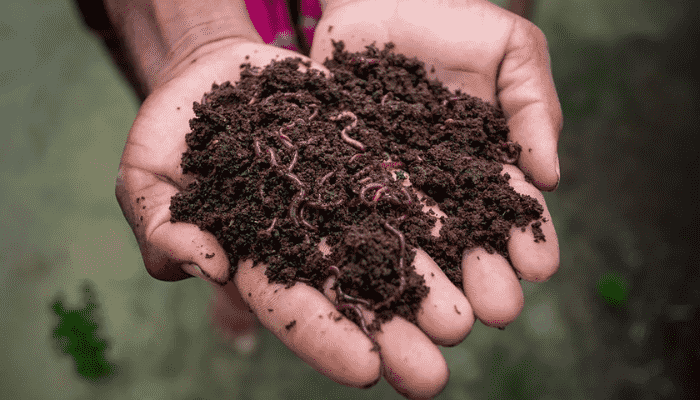
1. How to use vermicompost in potted plants
By adding vermicompost to the potting soil of your established plants, you are topdressing them. For added nutrient boosts, I like to use vermicompost every fifteen days. Every nutrient that plants require, both macro and micro, is present in vermicompost. It can be added to give plants a variety of nutrients, which is why it is termed a bulk fertilizer. As opposed to utilizing synthetic fertilizers, which when applied excessively may burn the roots, you can add it every few days and it won’t harm the plants.Vermicompost has a better ability to hold water in the spring, summer, and fall, which is beneficial for decorative and vegetable plants.
To use your garden gold as a top dressing, simply add it to the drip line of any plant. The drip line finishes at the furthest outer branches and encircles the whole plant. The area around a plant (or tree) where water would “drip off” and fall to the ground is known as the drip line. Consider someone sprinkling water from above onto the plant or tree’s limbs. Here, the little roots take in a lot of water and nutrients.
Prior to adding the vermicompost, take sure to remove one inch of the potting soil.
- Place a couple handfuls of the vermicompost on top of the ground. To offer the soil even more nutrition and insect protection, you could also apply additional fertilizer, such as cow dung or neem cake powder.
- Now that the top potting soil has been removed, you can spread it over the vermicompost layer.
- Water the potting soil thoroughly until water runs out of the drainage holes in the grow bag or container.
- When the plant is growing, try adding the vermicompost every 15 days to give it an extra injection of nutrients.
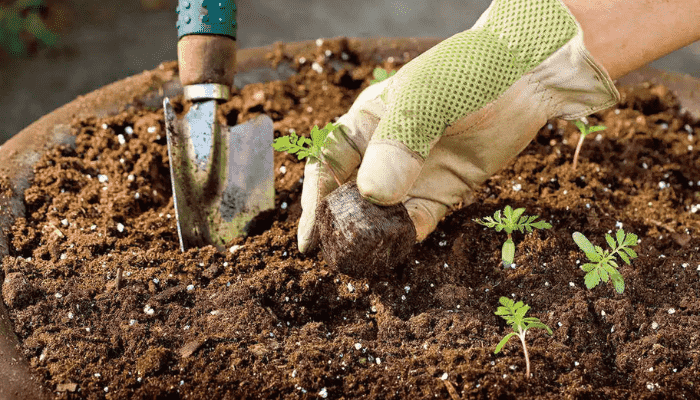
2. Use vermicompost to improve potting soil
Prior to planting, we will advise obtaining high-quality potting soil. The texture of this soil will be ideal for the plant’s support. It will let out more moisture while retaining plenty. Too much sand or clay in your potting soil could be the cause. In other words, the water will run out too quickly. Otherwise, you run the danger of overwatering it and harming the roots because it will remain in the soil for a long period. Vermicompost can be used to enhance the texture and modify such subpar potting soil. You can combine one part vermicompost with two parts potting soil.
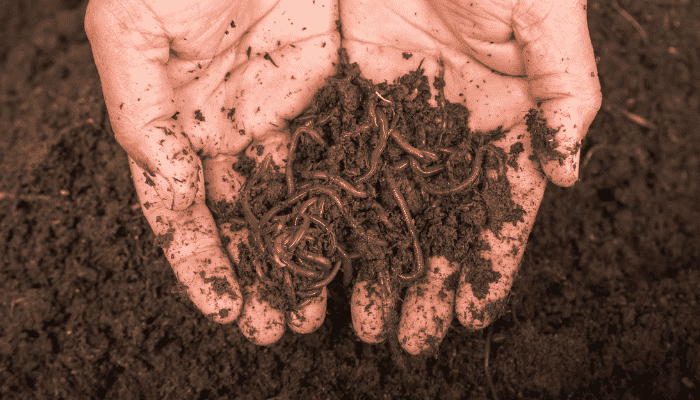
3. Use vermicompost in your garden betty seed starting mix
With cocopeat and vermicompost, you may make your own seed-starting mix. Soil is not a component of the seed-starting mixture. The proper texture for the seeds to germinate will be provided by using cocopeat instead. Enough moisture will be retained while the excess is drained out. It provides the seeds with the ideal conditions for germination and seedling growth without clumping like soil does. We’ll recommend incorporating vermicompost into the cocopeat and preparing the mixture for seed beginning. The seedlings will receive nutrients and helpful organisms from the vermicompost.
While the seeds have their own nutrients during germination and seedling development, adding vermicompost will help them. The seedlings can be grown for a month in the same container or seedling tray.
4. The use of vermicompost in ornamental potted plants
We can also profit from vermicompost’s advantages when it comes to potted plants and ornamentals. You may give your potted plants a consistent supply of macro- and micronutrients, leading to stronger foliage and colorful blossoms, by applying a topdressing of vermicompost every 15 days.
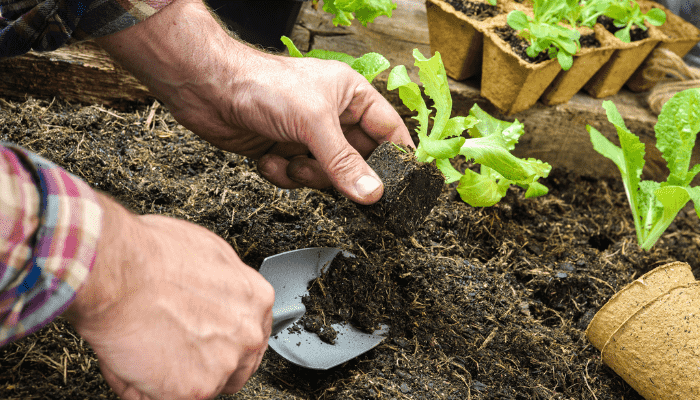
5. How to use vermicompost in agriculture
Vermicompost adds extra nutrients to the soil and helps prevent common plant diseases and airborne illnesses in vegetable gardens and fruit-bearing plants. Our plants can fend off diseases and pests more effectively when we create healthier soil conditions. Increased productivity in fresh fruit and vegetable harvests is the end result of this.
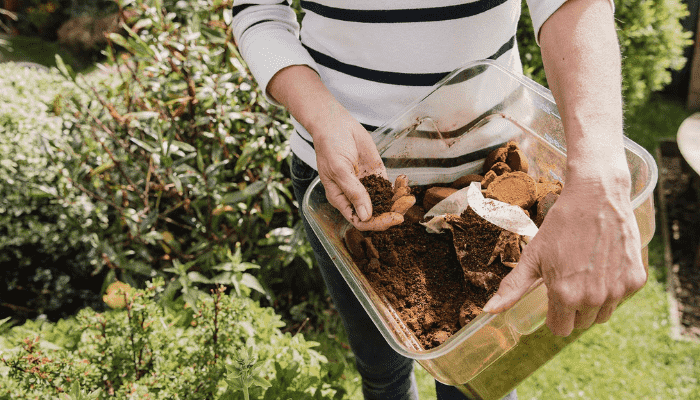
Adding vermicompost to potted plants, how frequently should you do so?
Vermicompost is a great way to add extra nutrients to your growing plants; use it every fifteen days. Depending on the type of plant you are cultivating and when it is in its life cycle, this could change. However, you can utilize this average. This step is not necessary if you are starting seeds; wait until the seedlings are ready to be transplanted. Vermicompost can be added to the potting soil after the plant has been transplanted and is flourishing. You can also try adding vermicompost to benefit a plant if it is exhibiting symptoms of nutritional deficiency, such as yellowing leaves and reduced development.
Can vermicompost be used for indoor plants
Because you can make adjustments to houseplants all year round, they make the perfect vermicompost receiver. In the plant’s pot, take out a tiny bit of potting soil and add some vermicompost in its place. To replace the soil you removed, add 1/4 to 1/2 inch to the pot. Your houseplants will beg for this small treat every two months if you give it to them (and they probably wouldn’t have before).
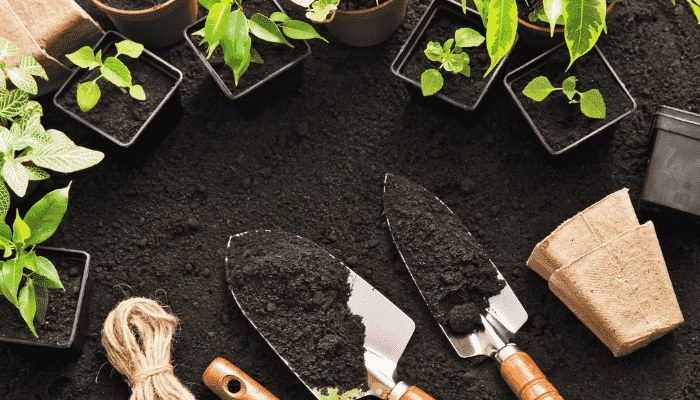
Which is better compost or vermicompost for potted plants?
For potted plants, vermicompost has more nutrients, a better texture, and more helpful organisms than compost. When vermicompost is available, I would suggest utilizing it. However, using compost is also OK because it has beneficial organisms and nutrients. Beneficial microbes break down organic materials to create compost, which is a nutrient-rich substance. Worm castings, or the leftover material left over after eating and digesting organic matter, are what is known as vermicompost. When it comes to nutrients and beneficial organisms, vermicompost is superior to compost. Vermicompost is a more potent growth stimulator than compost, according to this study. It enhances the soil’s biological, chemical, and physical qualities.
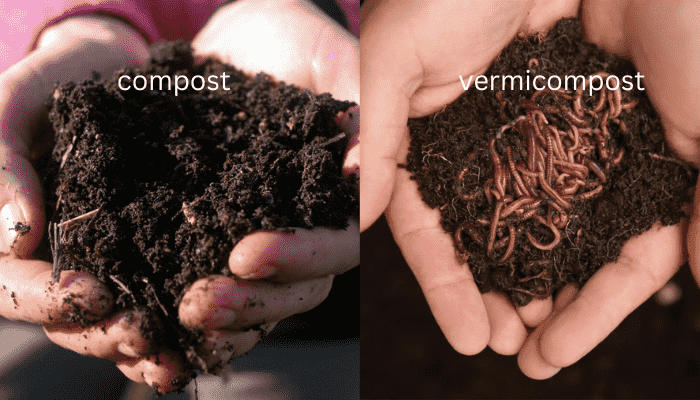
Can I use vermicompost with any kind of potted plant?
All potted plants benefit from vermicompost because it provides a balanced supply of nutrients. It enhances the texture of the soil and enriches the potting soil with beneficial organisms. As soon as the plant begins to grow, you should apply vermicompost to ensure it receives the necessary amount of nutrients. It’s also a good idea to add more potassium-rich organic fertilizer, such as wood ash, once the plant has begun to flower or fruit. This aids in providing a boost to the plant at this point.
FAQs
How to apply vermicompost to plants?
The process varies with the plant’s age. Create a 6-7 inch deep circular trench around the plant. Enrich the soil with a blend of dry cow dung, bone meal, and 2-5 kilograms of nutrient-rich vermicompost. Cover this layer with soil, then apply organic mulch to retain moisture and boost fertility. Finish with a light spray of water to activate the nutrients.
How much vermicompost required per plant?
Boost your crop yield with 2-3 tonnes/acre of nutrient-rich vermicompost for commercial crops. Supercharge vegetable growth with 1-2 tonnes/acre. For lush gardens, invigorate each plant with 20 kg of premium vermicompost!
Can vermicompost be used directly?
Vermicompost can be seamlessly integrated into the soil or transformed into a potent liquid fertilizer known as worm tea by mixing it with water.
How is vermicompost applied?
Vermicompost works best when incorporated into the soil mixture during the potting of a new plant. Combine one part nutrient-rich garden soil, one part moisture-retaining coco-peat, and one part organic vermicompost in an equal 1:1:1 ratio. Mix thoroughly to create a powerful blend that nourishes and supports healthy plant growth.
Is vermicompost good for flowering plants?
Vermicompost delivers a powerful, slow-release source of nutrients that promotes robust growth and vitality in fruit trees. Flowering Plants: Vermicompost is a game-changer for flowering plants, with varieties like roses, dahlias, and marigolds thriving on its enriching properties.
How to use vermicompost for plants?
Remove a small portion of the potting soil from your plant’s pot and replace it with vermicompost. Add a layer of 1/4 to 1/2 inch to fill the space you cleared. Give your plants this little boost every couple of months, and soon they’ll be thriving—something they may not have done before!


